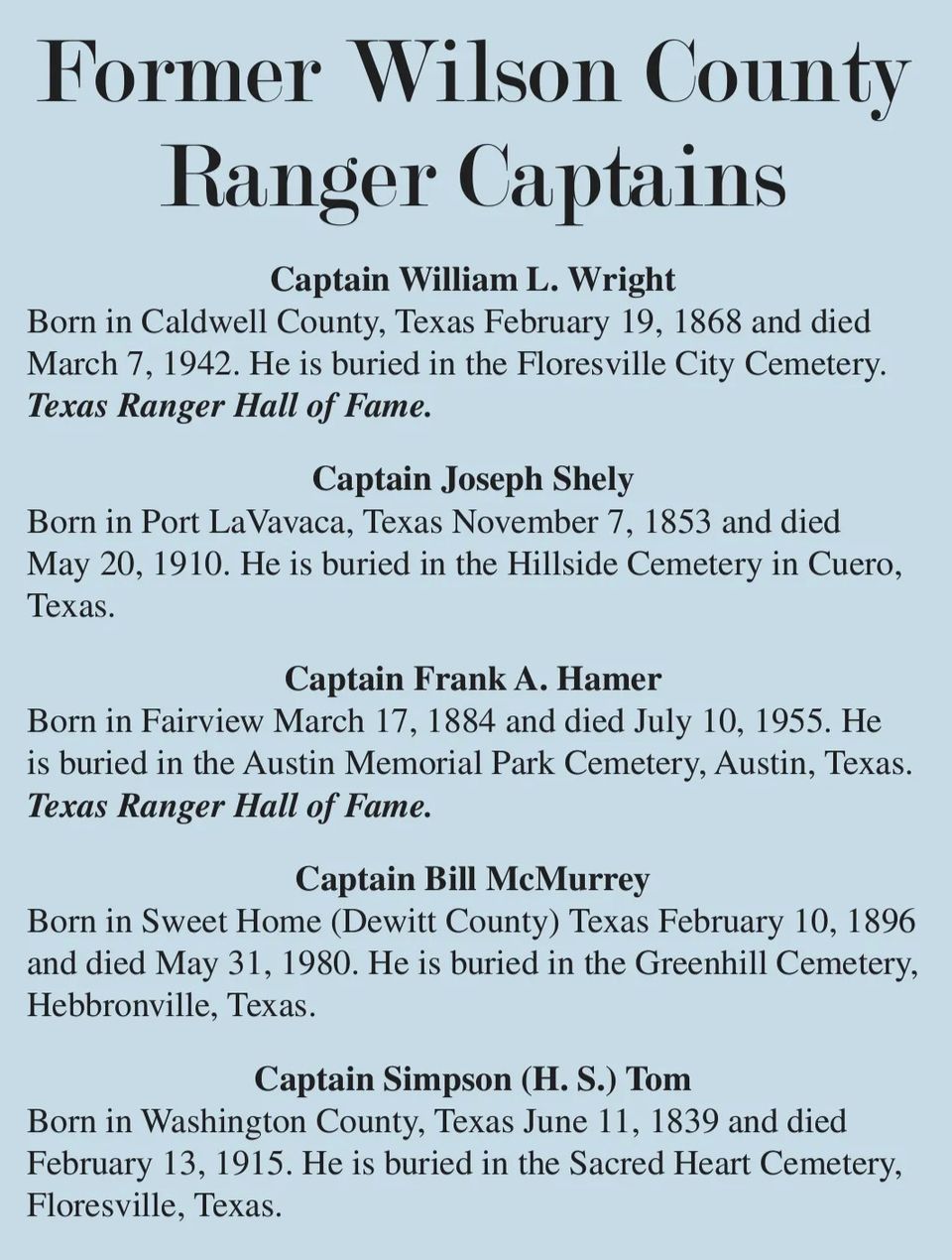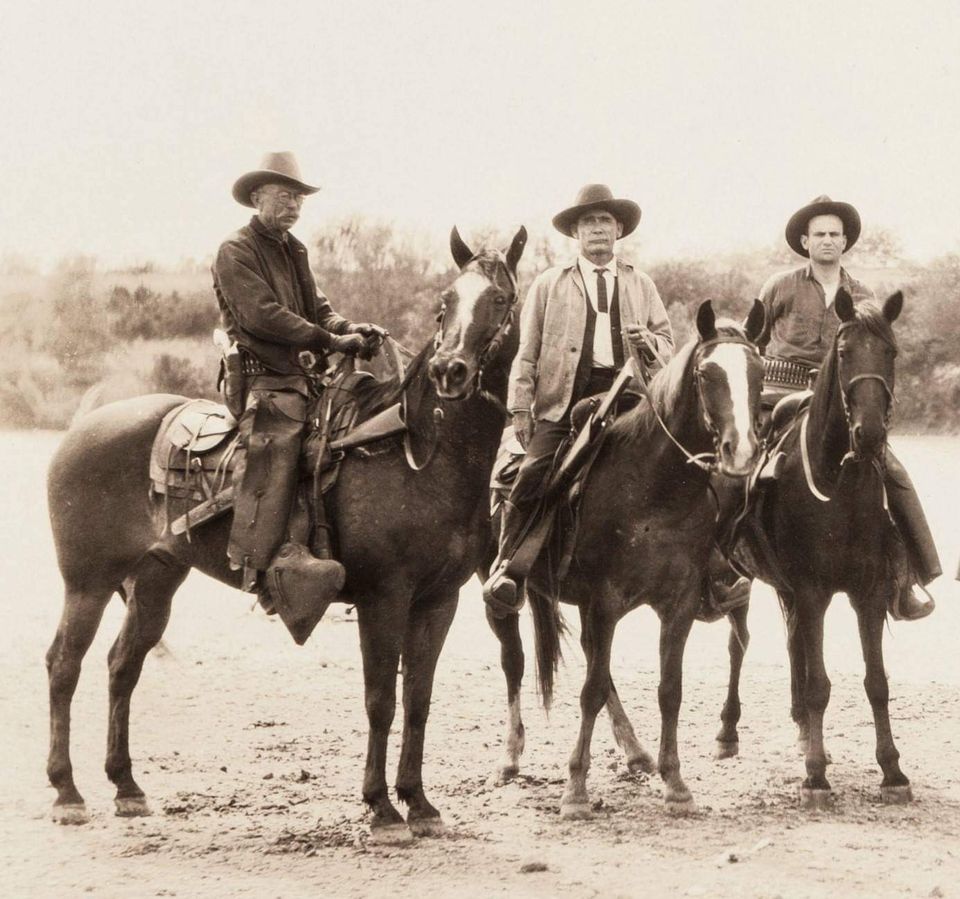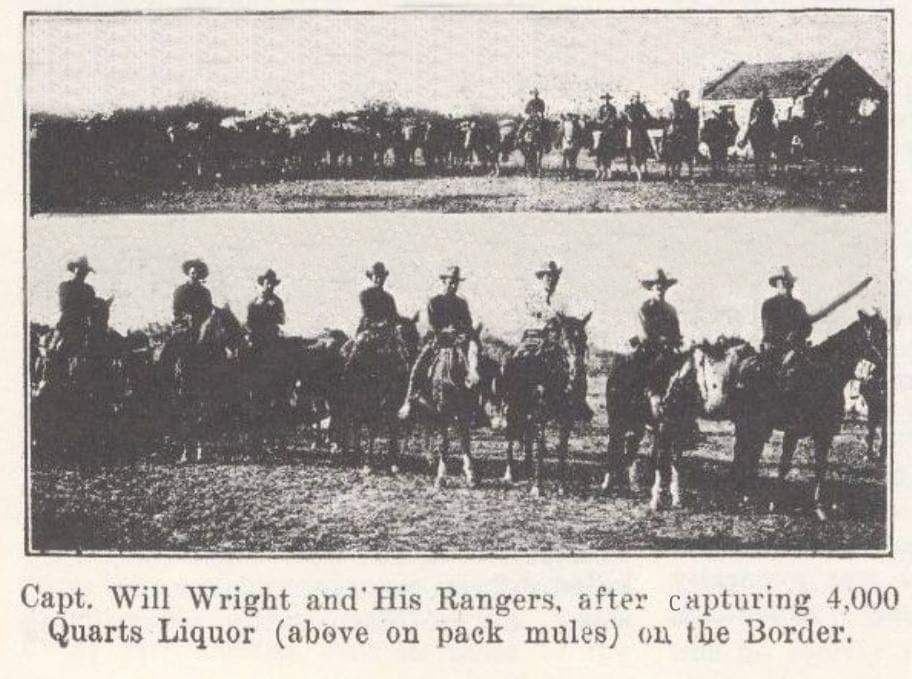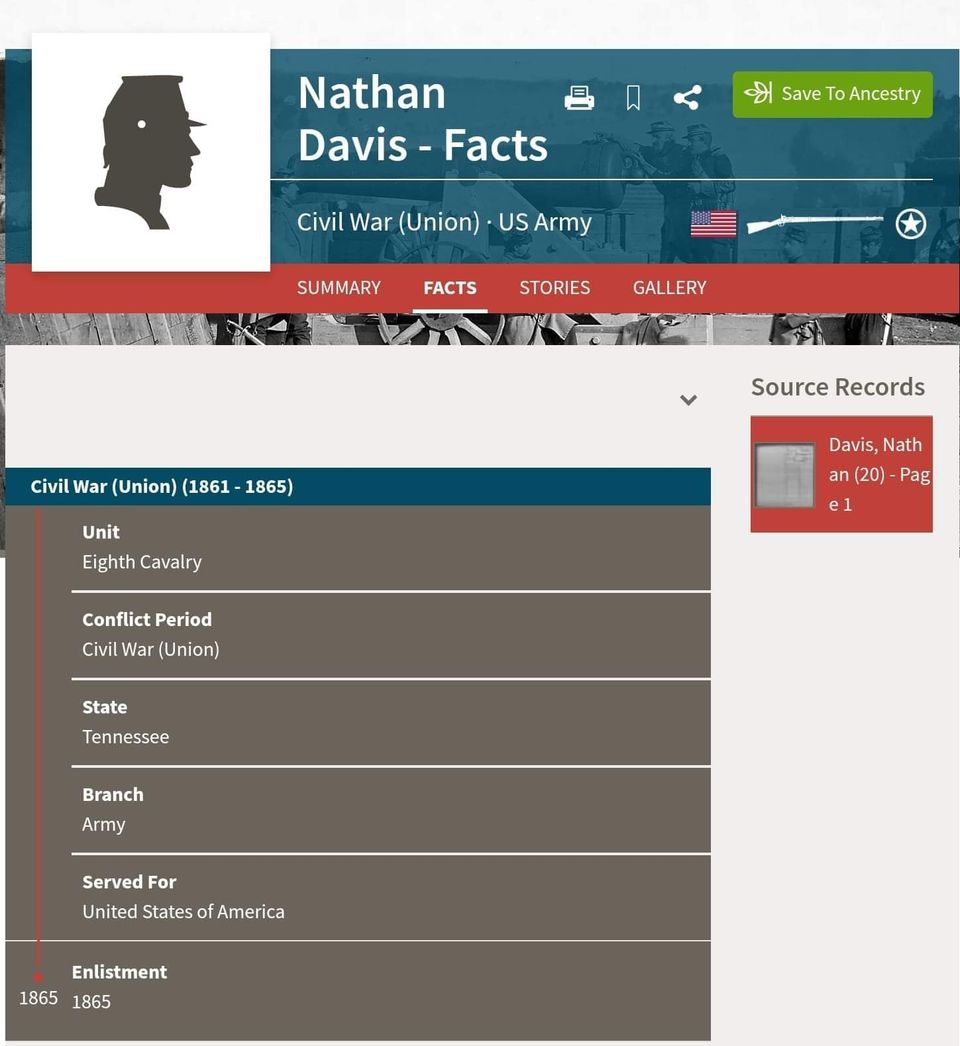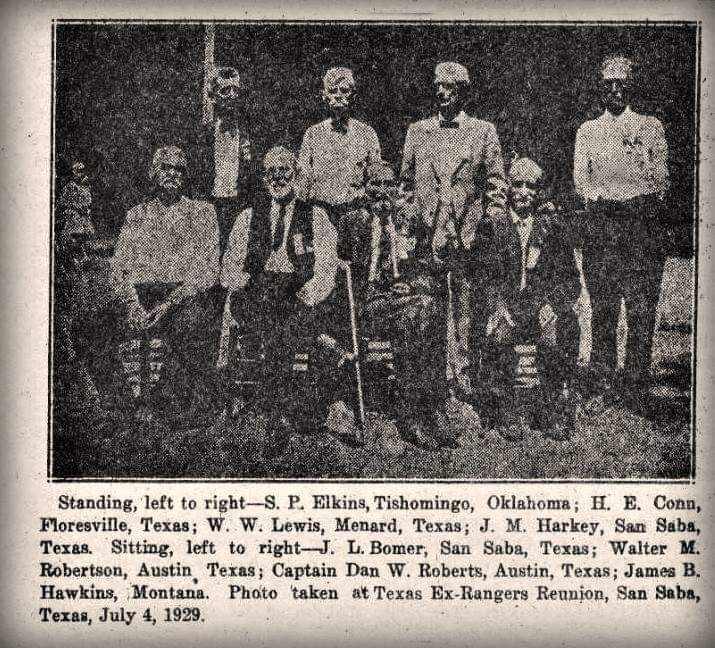J. Marvin Hunter's Frontier Times Magazine, December, 1929 ..... THE FOLLOWING account of the Loss Valley Fight was related by Walter M. Robertson of Austin, Texas, who with his comrade, William W. Lewis, of Menard, were members of Maj. John B. Jones' escort detailed. from Co. D. Frontier Battalion. Beginning with the story of the Adobe Walls Fight which took place in June 1874, as related to Mr. Robertson by Jesse Cass and Tom Woolery, who took part in the fight. Cass and Woolery were buffalo hunters and personal friends of Mr. Robertson and both were Travis county men whom he often met and they talked of their experiences on the frontier.
During the summer of 1874 there were more buffalo killed by the buffalo hunters in the Staked Plains of Texas than any year before or after. A party of Apache Indians were seen by the hunters, presumably on their way from New Mexico to the Indian Territory. The Indians stopped and got some of the meat from the carcasses of buffalo killed by the hunters and proceeded on their way to the Indian Territory. Hundreds of carcasses were actually seen by the Rangers as they rode through the country. There were so many that the wolves and buzzards could not eat them and they were left to rot and dry up. When the party of Apaches reached the Territory they reported to their friends the terrible slaughter and waste taking place on the plains and the Indians, becoming enraged, banded together and started to Texas to punish the buffalo hunters. They were led by the Indian chiefs Quanah Parker, Comanche, and Lone Wolf, the Kiowa chief. The band was made up of Kiowas, Comanches and Apaches, numbering about one thousand men or more.
The Indians came upon the buffalo hunters, who numbered only about thirty-five men, near the Adobe Walls and the hunters retreated to that place for protection. They drew up their wagons, which were filled with meat and hides, forming a half circle. The mules and oxen were placed within the circle and the hunters who were equipped with long range, high powered buffalo guns, withdrew to the protection of the Adobe Walls, and as the Indians made one charge after another they were literally whipped to a frazzle by the small party of men and their powerful guns. It was an all day fight and the Indians soon found out that they could not dislodge the hunters for as they retreated the long range guns in the hands of the white men continued to pick them off long after they thought they were out of range. They gave up the fight and the band separated, Quanah Parker taking as many of his band of Comanches as would go with him back to the Indian Territory, and Lone Wolf taking the remainder of the band, about three hundred men, among them Kiowas, Comanches and Apaches, coming on down into Young County, where they met the Texas Rangers. The Rangers had received word that the Indians were in Texas on a raid and Major John B. Jones and his escort of about twenty-five men were about sixty miles from Captain Stephen's company on the morning of July 11, 1874. They made a forced march, traveling all that day and up until about ten o'clock that night to reach Capt. Stephens' company, which was camped on Salt Creek near the line of Young and Jack counties. On the morning of the 12th, at day-break, the scouts were started out of find the Indian trail.
Lieutenant Wilson of Stephens' company, with four men, two from Maj. Jones' escort, Walter M. Robertson and Ross James, and two men from Stephen's company. Traveling east for about four miles they found the Indian trail, which was very plain, showing that the band consisted of several hundred mounted men. Lieut. Wilson sent one of the men back to in form Maj. Jones and Capt. Stephens that the Indians were in force and to come at once and bring every available man. The detail remained where they were until Maj. Jones and Capt. Stephens arrived, in about an hour and a half. The entire party of only about thirty-seven men started out at once on the trail of the Indians, following it in to Loss Valley, where the fight took place. On the way the Rangers passed within sight of the monument erected by the U. S, Government in memory of the government wagon train and soldiers who were killed and burned by the Indians a few years before. Following on into the Valley the Rangers were ambushed by the Indians, who were hidden in the woods and behind the boulder.
The Indians charged the white men, who were on the prairie, and if it had not been for the cool-headedness of Maj. Jones and Capt. Stephens, who commanded the men to stay together and not to be separated, they would have probably, all been killed.
Capt. Stephens said to Maj. Jones, "Major we will have to get to cover somewhere or all be killed." The Indians having completely surrounded the white men, cutting them off from the creek and water, Maj. Jones replied that they would charge the Indians where they were thickest and get to the timber. The charge was successful, the Indians were routed and the Rangers got to cover, from which they fought the balance of the day.
It must be understood that Maj. Jones' escort was composed of men from each of the six Ranger Companies, seven men from each company. During the ambush at the beginning of the fight Lee Corn of Coldwell's Company, was badly wounded in the shoulder, his arm being nearly shot off. George Moore of Maltby's Company, was also severely wounded below the knee and remained a cripple the rest of his life.
Being cut off from water, after several hours of hard fighting in the hot July sun, two young men, Bailey and Porter, of Stephens' Company, undertook to get to the creek for water. Bailey was killed, but Porter escaped by abandoning his horse and getting into the creek bottom. In the meantime the Indians, becoming troublesome from the rear, Maj. Jones asked for volunteers to hold the Indians back from the rear, while the rest of the men fought them from the front. William W. Lewis, now of Menard, and Walter M. Robertson of Austin, volunteered to go about one hundred and fifty yards up on a ridge, which was bare with the exception of one oak tree about two feet in diameter. Maj. Jones went with them to see that they were in the right position to hold the Indians hack, and as he left them he said, "Boys stay here until they get you or until the fight is over." After the fight was over and the Indians had retired it was found that the tree behind which the two men had stood for five hours was literally riddled with bullets and the bark was all torn away on the side next to the enemy, while some of the smaller limbs were lying where they had fallen. It was near this tree that Robertson's horse was shot and killed.
Sometime after Robertson and Lewis had taken their position, during a lull in the fight Lieutenant Wilson came up to see how they were getting along. When he came up to where they were he was swearing at the Indians in a strenuous manner. He was carrying his hat in his hand and sat down behind the tree with the other two men, Lewis said, "Lieutenant you ought not to swear like that. Don't you know that you might be killed at any minute? Wilson who was fanning' with his hat said, "That is so boys," and became very quiet. Just about that time the Indians fired a volley cutting a good sized dead limb from the tree overhead. It descended with great force right on top of Wilson's bare head. He put his hand quickly to his head and bringing it away covered with blood he said, "By God, boys, I'm shot, sure as hell." He got up and went down the hill to where the other men were still thinking that he was shot until Dr. Nicholson told him better. During the evening John Holmes from Company D. and a man from Stephens' company were detailed to go to Jacksboro for relief. However, the relief did not arrive until the next morning. It was then too late, for the Indians had withdrawn during the night. Robertson and Lewis remained in their position on the ridge for about five hours, until night came and the Indians withdrew, After the Indians retired the Rangers prepared to leave the battleground. There were only two men killed and two seriously wounded during the fight. Billy Glass and Bailey mentioned before, were killed and George Moore and Lee Corn were wounded.. The Indians' loss was figured at about twenty-one dead and a number of men and horses wounded. Nine dead Indians were counted by the Rangers during the first part of the fight. Some years later Grooms Lee, who was in the fight, was with a party of surveyors who were laying out the route for the railroad which runs within a mile or a mile and a half of the Loss Valley battleground. They were, told by some cowboys that there were graves on the mountain where the fight took place.
When the party investigated they found eleven graves placed in a circle, presumably with their heads together and feet pointing outward to form a circle. Several other skeletons were found in crevices nearby where they had been covered with rocks. Counting the nine that were seen to fall and the fourteen discovered later made a total of twenty-one. During the ambush at the beginning of' the fight Robertson's horse had been shot from under him leaving him afoot. When the Rangers left the battle-ground his saddle was put on a captured Indian pony. Grass's body was strapped in the saddle and carried back to Loving's ranch, with Robertson walking and leading the horse. Glass was buried at Loving's ranch the next day, the Rangers taking boards from the smoke-house to make the coffin. The next day after the fight Maj. Jones and relief returned to the battleground and found Bailey's body. It was a terrible sight, he having been horribly mutilated, and he had been scalped. Fourteen or fifteen arrows were taken from his body. Lee Corn after he was shot, and a man from Coldwell's company named Wheeler, and Porter, had taken refuge in Loss Creek, where they were found by Maj. Jones and party. They were taken to Stewart's ranch and Dr. Nicholson of the escort attended them. Bailey's body was carried to Stewart's ranch and was buried near the grave of a young cowboy named Heath, who had been killed by Lone Wolf and his band the day before the Loss Valley fight. After burying Glass at Loving's ranch the thirteen or fourteen Rangers who had been left afoot by having their horses killed during the fight put their saddles in a wagon and were driven to Stewart's ranch by a man named Reed.
Lee Corn and George Moore were carried in the same wagon to Jacksboro and put in the Government hospital there.
While in Jacksboro the men in the escort who had lost their horses bought new mounts, but the men from Stephens' company returned to their camp on Salt Creek, where they got new horses. Walter M. Robertson who tells of his experiences during the Loss Valley fight was born in Austin, Texas, July 26, 1853, at the Old French Embassy. He is a member of an old Texas family, his father coming to Texas in 1837. His father, Dr. Joseph W. Robertson, was a member of the Congress of the Republic of Texas, during President Lamar's administration, was Surgeon of the U. S. Army post during the Mexican War of 1846, and took active part in the life of the Republic and State of Texas until his death. Major Jones, who commanded the Texas Frontier Battalion, composed of six companies of Texas Rangers with seventy-five men to each companty, was a cousin of Walter Robertson. In 1872 or 1873 the Indians became a serious menace to the settlers in their raids into Texas murdering and stealing during the light of the moon almost the year round. In 1873 Gov. Coke asked the Legislature to appropriate enough money to organize the Frontier Battalion to be used as a protection for the whites, stop the depredations and rid the frontier of the Indians. Up to that time the Indians had been making raids to within twenty-five or thirty miles of Austin, the state capital. When the Texas Frontier Battalion was organized in 1874, Major John B. Jones was made commander with the privilege of selecting the captains of each company, which he did.
↓↓↓↓↓↓↓↓↓↓↓↓↓↓↓↓↓↓↓↓↓↓↓↓↓↓↓↓↓↓↓↓↓↓↓↓↓↓↓↓↓↓↓↓↓↓↓↓↓↓↓↓
Standing, left to right—S. P. Elkins, Tishomingo, Oklahoma; H. E. Conn, Floresviile, Texas; W. W. Lewis, Menard, Texas; J. M. Harkey, San Saba, Texas. Sitting, left to right—J. L. Bomer, San Saba, Texas; Walter M. Robertson, Austin. Texas; Captain Dan W. Roberts, Austin, Texas; James B. Hawkins, Montana. Photo taken at Texas Ex-Rangers Reunion, San Saba, Texas, July 4, 1929.
[From J. Marvin Hunter's Frontier Times Magazine, December, 1929]
